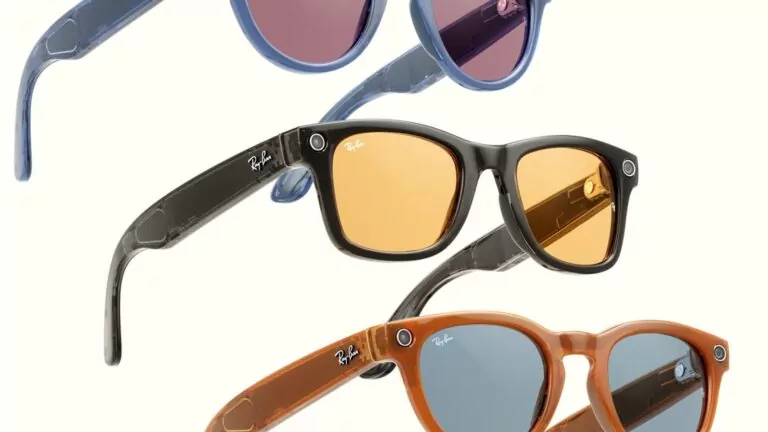
Smart glasses have seen their ups and downs. From the early excitement around Google Glass, to the sobering downfall of… Google Glass. The before-its-time and identity-confused device has since become a cautionary tale and the butt of jokes throughout the AR land.
But that cautionary tale ended up serving the market well, and has led to the evolutionary point where we now sit. Though there’s still quite a distance to go, the past six months have seen a noticeable inflection in excitement and investment in the smart glasses category.
This has involved a few factors. For one, the broader XR world has begun to get more realistic. After spending a decade obsessed with an overly-ambitious vision that achieves both graphical richness and wearability, smart glasses are beginning to be self aware that they can’t.
This is seen in devices with more narrow, focused, and purpose-built use cases. They contrast the previous standards in hardware like Microsoft Hololens 2 and Magic Leap 2 – venerable devices in their own right, but lugging do-everything bulk that only works for enterprises.
One example of the focused alternative is Xreal Air 2. It’s built for the single purpose of private massive screen viewing for games or entertainment. It’s not only focused, but it targets a use case that is relatable and resonant with most consumers. Our survey data supports that.
Information vs. Optics
The second factor is AI. Its ability to infuse intelligent and personalized assistant functions takes the burden off visuals as a central smart-glasses selling point. Freed from that burden, there’s less of a dilemma in the classic tradeoff between a robust visual UX and style/comfort.
The result is experiences whose value lies not in graphical intensity but in the personalization and relevance of the information being delivered. It’s more about information than optics. It’s experientially meaningful, even if graphically underpowered. And, again, it can be stylish.
The device that best personifies this principle is Ray-Ban Meta smart glasses. Besides upgraded audio, video capture, and live-streaming functions, multimodal AI brings meaningful utility to the table. It can identify and contextualize real-world objects using visual input and voice output.
This principle and its impact on the smart glasses world was best summed up by Mark Zuckerberg’s underplayed comments at the Fall Meta Connect event. While everyone was focused on admittedly-sexier Quest 3 features, the following comment was largely missed.
Before the last year’s AI breakthroughs, I kind of thought that smartglasses were only really going to become ubiquitous once we really dialed in the holograms and the displays, which we are making progress on but is somewhat longer. But now I think that the AI part of this is going to be just as important in smartglasses being widely adopted as any of the augmented reality features.
Form & Function
All the above boils down to the art of the possible – a bridge to the fully-actualized smart glasses we really want. We’re talking immersive optics and style in the same package. But it’s becoming clear that steps to get there won’t be a period of longing and underwhelming products.
In other words, the glasses along the way are showing real appeal. And that will only get better. In the meantime, Apple Vision Pro looms over everything, showing what’s possible at the extent of the UX spectrum. This could lift all boats through Apple’s signature halo effect.
For example, Vision Pro could popularize immersive streaming and entertainment use cases examined above. Because that’s the device’s primary function, at least in its V1 positioning, it could stimulate demand for more affordable flavors. Translation: Xreal Air 2 and others like it.
Speaking of Apple Vision Pro, it also represents one end of the sliding scale between UX and style/comfort. Quest 3 likewise sits at that end of the spectrum, while smart glasses sit at the other end. The endgame is for these two endpoints to someday meet in the middle.
That will take several years, but we’ll see good stuff along the way, as noted, including the latest batch of smart glasses. To that end, we’ll leave you with a video from the always-astute Becca Farsace that explores some of these dynamics and a short history of where we’ve been so far…






